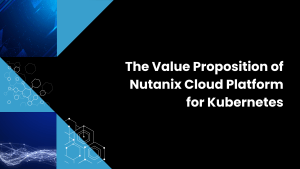In recent years, IBM has become the James Brown of the storage industry: super talented and incredibly hardworking, with a loyal, if targeted, following. But the papa of the storage industry has a new bag, and it’s leading to an important resurgence in IBM’s storage fortunes.
What’s the new bag? Multi-cloud. Why can IBM claim a particular forte in multi-cloud? Because in 2019, enterprises will begin the long, steady process of bringing the cloud experience to legacy systems, and IBM storage is very well positioned to help customers make that happen. Indeed, IBM’s track record of sustaining customer investments in DB2/Domino, iSeries, and AIX means that IBM has had to build high-performance and high-reliability storage with a multi-environment focus for 20 years. That knowledge is extending well to today’s multi-cloud world and modern, complex data-first workloads.
So, what had been something of a liability now becomes a strength. IBM’s 23 October announcement further builds on IBM’s momentum, while addressing a few needs:
- A smoother storage hardware portfolio. While still complex, the IBM storage system portfolio is being improved by larger Storwize systems, smaller (yet still scalable) FlashSystems, and even better RAS and capacity for the DS888X mainframe storage devices. The complexity of the portfolio in part is driven by IBM’s legacy, given enterprise customer environmental, financial, and application differences. However, IBM is finding ways to simplify the hardware and software components that feed the family, increasing the likelihood that it can keep up with technology advances and cost reductions as the storage industry evolves.
- NVMe expanded across most of the storage hardware portfolio. Since 2017, Wikibon has recommended that enterprise customers write NVMe into RFPs for scalable hardware. IBM might have been a bit late to the NVMe party, but its flash-based storage products are dancing the NVMe now. IBM’s NVMe support is being extended to fabrics (e.g., fiber channel) in a footprint-friendly way, providing for simpler upgrades that are pretty easy on the administrator and finance team. Moreover, the IBM Spectrum software family (e.g., IBM Spectrum Virtualize) will be boosted with additional NVMe capability in 2019.
- IBM Spectrum Discover for cataloging unstructured data. The newest member of the Spectrum data service management family facilitates metadata capture, enhancing, and workflow activation to accelerate tasks and processing, improve data governance, and facilitate data placement optimization. Initially supporting IBM Cloud Object Storage and IBM Spectrum Scale, IBM plans to support Dell EMC Isilon in 2019.
- Improved “breadth-first ML ITOM” for IBM storage solutions. Wikibon distinguishes between the use of ML for “depth-first ITOM” and “breadth-first ITOM.” Depth-first tooling exploits a vendor’s knowledge of a product to improve performance of that product; breadth-first considers groups of components and optimizes groups against broader performance goals. While other storage vendors have been applying AI/ML to a broader fabric view of data system performance, IBM has been more narrowly focused on device performance. IBM Storage Insights expands IBM’s exploitation of AI in storage to the storage network. The cloud-based service diagnoses points of gridlock and alerts IBM support staff, who then can proactively call clients with support suggestions. Thus, while the service isn’t fully automated, it’s an important step in the direction of greater automation of optimization options in the block storage world.
- Specific application support. SAP is among the legacy apps most ready for cloud migration, catalyzed in part by SAP’s HANA option. IBM has introduced a sub-family of storage hardware and software products that are blessed by SAP TDI certification. Additionally, IBM plans to marry storage and blockchain together in 2019. Finally, IBM has become the latest storage vendor to team up with NVIDIA to create a joint AI-oriented reference architecture tied to NVIDIA’s DGX-2 platform.


